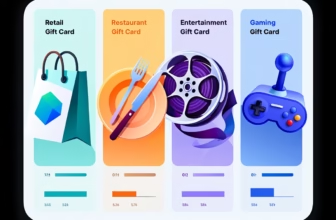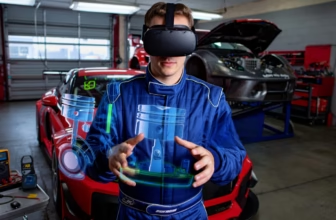
Gaming steering wheels have revolutionized the racing simulation experience, bringing unprecedented realism to virtual motorsports.
However, this technological advancement comes with an unexpected consequence that many enthusiasts discover too late: serious arm, wrist, and hand injuries.
Understanding why these injuries occur and how to prevent them is crucial for anyone serious about sim racing.
The Hidden Dangers of Force Feedback Technology
Modern gaming steering wheels use force feedback (FFB) technology to simulate real driving forces through motors and mechanical systems. While this creates incredible immersion, it also introduces genuine physical risks that many users underestimate.
Direct Drive Wheels: Power Beyond Expectations
Direct drive wheelbase systems represent the pinnacle of sim racing technology, but their power levels can be dangerous. These systems can generate:
- Entry-level direct drive: 5-8 Newton-meters (Nm) of torque
- Mid-range systems: 12-15 Nm of continuous force
- High-end units: 20-25 Nm or more of rotational power
- Professional simulators: 30+ Nm of bone-crushing force
To put this in perspective, even a moderate 15 Nm direct drive wheel generates enough torque to easily overpower most people’s grip strength. When an unexpected crash or collision occurs in the simulation, these wheels can spin violently and without warning, potentially causing serious injuries.
Real Injury Reports from the Community
The sim racing community has documented numerous injury cases:
- Sprained wrists from wheels jerking during crashes
- Dislocated thumbs when drivers hold on during impacts
- Bruised hands from paddle shifters hitting fingers
- Strained forearms from wrestling with high-torque feedback
- Hyperextended joints from wheels spinning beyond natural range
One particularly concerning trend involves users experiencing carpal tunnel syndrome and repetitive strain injuries from prolonged exposure to constant force feedback vibrations and resistance.
Why Gaming Steering Wheels Cause Arm Pain ?
Repetitive Strain and Overuse
Unlike traditional gaming controllers, steering wheels demand sustained muscle engagement. Your arms, wrists, and hands work continuously to:
- Counteract force feedback resistance
- Maintain precise steering control
- Resist sudden wheel movements
- Hold position during extended races
This constant muscular tension leads to repetitive strain injuries (RSI), which develop gradually and can become chronic without proper prevention.
Poor Ergonomic Setup
Most arm pain in sim racing stems from improper ergonomic configuration:
- Incorrect Wheel Distance: When the wheel sits too far away, drivers overextend their arms, creating shoulder and forearm strain. Conversely, positioning it too close forces awkward wrist angles.
- Wrong Wheel Height: A wheel mounted too high forces uncomfortable upward wrist extension, while one too low creates downward pressure on the joints.
- Inadequate Seating Position: Poor seat adjustment affects the entire kinetic chain, from shoulders down to wrists, multiplying strain on every joint.
Excessive Force Feedback Settings
Many users, particularly beginners, maximize force feedback settings thinking it enhances realism. However, running FFB at 100% intensity:
- Fatigues muscles rapidly
- Masks subtle force nuances
- Creates jarring, unnatural impacts
- Increases injury risk during crashes
Professional sim racers rarely use maximum FFB settings, typically operating between 60-80% of available torque for optimal balance of realism and safety.
Grip Technique Problems
Death grip syndrome affects many sim racing enthusiasts who squeeze the wheel unnecessarily tight. This creates:
- Forearm muscle fatigue
- Reduced tactile sensitivity
- Increased joint stress
- Accelerated onset of pain symptoms
High-Risk Scenarios for Injuries
Crash Situations
The most dangerous moments occur during virtual crashes or collisions. When the simulation detects impact, it can instantly send maximum force through the wheel, causing it to:
- Spin violently in either direction
- Exceed human reaction time
- Apply forces beyond grip strength
- Continue rotating past comfortable range of motion
Extended Gaming Sessions
Marathon racing sessions lasting several hours create cumulative stress that overwhelms the body’s recovery capacity. Even moderate force levels become problematic when sustained over long periods.
One-Handed Driving
Some drivers attempt one-handed control during casual driving, which dramatically increases injury risk. A single hand cannot safely manage the full force output of modern wheels, especially during unexpected events.
Comprehensive Prevention Strategies
Optimize Your Ergonomic Setup
Proper Seating Position:
- Seat back angle: 100-110 degrees from vertical
- Knees slightly bent when pressing pedals fully
- Feet flat on pedal surfaces without stretching
- Full back support maintaining spinal alignment
Ideal Wheel Positioning:
- Arms bent 90-120 degrees when gripping wheel
- Wheel height aligned with shoulders
- Distance allowing full rotation without arm extension
- Slight downward angle (5-10 degrees) for natural wrist position
Configure Force Feedback Safely
- Start Conservative: Begin with 50-60% FFB strength and gradually increase only if comfortable.
- Avoid Clipping: Use software tools to ensure FFB signals don’t exceed wheel capabilities, which can cause jarring, unnatural forces.
- Game-Specific Tuning: Different racing simulations require different FFB profiles. Spend time optimizing settings for each game rather than using universal configurations.
Develop Safe Driving Habits
- Learn to Let Go: Train yourself to release the wheel immediately when crashes are imminent. This single habit prevents most serious injuries.
- Use Both Hands: Never attempt one-handed driving with force feedback wheels, especially direct drive units.
- Emergency Stop Access: Keep the emergency kill switch easily accessible with your foot or knee for instant wheel shutdown.
Implement Regular Break Schedules
- 30-Minute Rule: Take a 5-minute break every 30 minutes of driving to allow muscles to recover.
- Hourly Stretching: Perform wrist, forearm, and shoulder stretches during longer sessions.
- Session Limits: Cap individual gaming sessions at 2-3 hours maximum to prevent overuse injuries.
Essential Exercises for Injury Prevention
Pre-Gaming Warm-Up Routine
- Wrist Circles: Rotate wrists clockwise and counterclockwise 10 times each direction.
- Finger Extensions: Spread fingers wide and hold for 5 seconds, repeat 10 times.
- Forearm Stretches: Extend arm forward, gently pull hand backward with other hand, hold 15 seconds each arm.
During-Session Stretches
- Prayer Stretch: Place palms together, lower hands while keeping palms together until feeling gentle stretch.
- Reverse Prayer: Place back of hands together, gently push upward for opposite stretch.
- Shoulder Rolls: Roll shoulders backward 10 times to release tension.
Post-Session Recovery
- Ice Therapy: Apply cold packs for 10-15 minutes if experiencing any discomfort.
- Gentle Massage: Use light pressure to massage forearms and wrists.
- Heat Application: Use warm compresses to promote blood flow and healing.
Choosing Safer Equipment
Force Feedback Wheel Selection
- Entry-Level Safety: 5-8 Nm wheels provide excellent immersion with minimal injury risk, perfect for beginners and casual racers.
- Intermediate Options: 10-15 Nm systems offer advanced realism while remaining manageable for most users.
- Professional Consideration: Only experienced users with proper safety protocols should consider 20+ Nm direct drive systems.
Ergonomic Accessories
- Racing Gloves: Provide better grip and protection while reducing the need for excessive grip strength.
- Wrist Supports: Help maintain neutral wrist position during extended sessions.
- Quick Release Systems: Allow rapid wheel removal for safety and convenience.
Cockpit Considerations
- Adjustable Rigs: Invest in fully adjustable cockpits that accommodate proper ergonomic positioning.
- Stable Mounting: Ensure rock-solid wheel mounting to prevent movement that can cause jarring forces.
- Emergency Access: Design your setup with easy access to emergency stops and quick exits.
Warning Signs to Watch For
Early Symptoms
- Mild tingling in fingers or hands
- Forearm stiffness after gaming sessions
- Wrist soreness during or after use
- Reduced grip strength in daily activities
Serious Warning Signs
- Sharp, shooting pains in arms or wrists
- Persistent numbness in fingers
- Inability to grip objects normally
- Pain that worsens with continued use
When to Seek Medical Attention ?
If symptoms persist more than 48 hours after stopping gaming or interfere with daily activities, consult a healthcare professional immediately. Early intervention prevents chronic conditions that could end your sim racing hobby permanently.
Recovery and Treatment Options
Immediate Care
- Rest: Complete cessation of gaming until symptoms resolve.
- Ice and Heat Therapy: Alternate between cold and warm treatments to reduce inflammation and promote healing.
- Over-the-Counter Pain Relief: Anti-inflammatory medications can help manage acute symptoms.
Professional Treatment
- Physical Therapy: Specialized exercises and techniques to restore function and prevent recurrence.
- Occupational Therapy: Workplace and hobby modification strategies to reduce strain.
- Medical Evaluation: Professional assessment to rule out serious conditions like carpal tunnel syndrome.
Building a Sustainable Gaming Practice
Long-Term Success Strategies
- Gradual Progression: Slowly increase session length and force feedback intensity over weeks and months.
- Cross-Training: Engage in activities that strengthen opposing muscle groups and improve overall fitness.
- Equipment Evolution: Upgrade equipment gradually, allowing your body to adapt to increased capabilities.
Community Support
- Share Experiences: Connect with other sim racers to learn from their setup and safety experiences.
- Mentor New Users: Help beginners understand safety protocols and proper equipment use.
- Report Issues: Document and share injury experiences to help improve community safety awareness.
Gaming steering wheels represent incredible technological achievements that bring unprecedented realism to virtual motorsports. However, their power demands respect and proper safety protocols. By understanding the risks, implementing comprehensive prevention strategies, and maintaining awareness of warning signs, sim racing enthusiasts can enjoy their hobby safely for years to come.
The key lies in recognizing that these devices are precision instruments capable of generating significant force, not toys. Treat them with the same respect you would show any powerful piece of equipment, prioritize proper setup and technique over maximum settings, and never hesitate to seek help if problems develop.
Remember: the goal is sustainable, long-term enjoyment of sim racing. A few minutes spent on proper setup and safety protocols will provide countless hours of pain-free virtual motorsports excitement.





